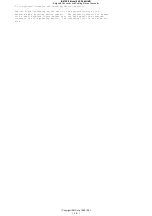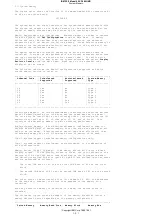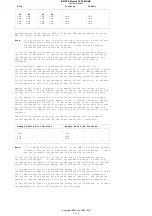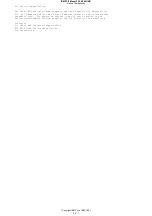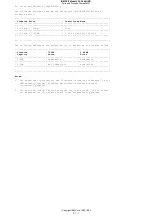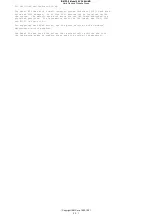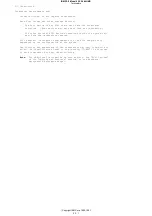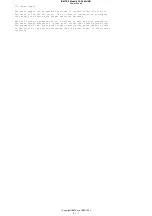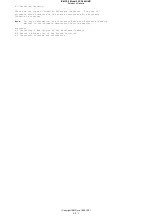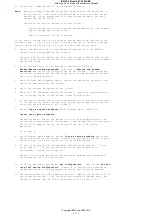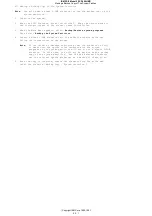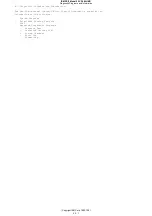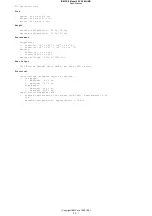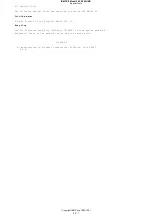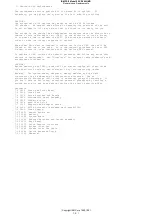
1.3 System Memory
The figure below shows the location of the memory-module-kit connectors B1
to A4 on the system board.
PICTURE 2
The system board has eight connectors for system-board memory-module kits.
The system can support up to 64MB of memory on the system board, but the
amount of memory accessed may be limited by the operating system.
Memory Requirements and Limitations: Whenever memory is added or removed
from the system, run Set Configuration from the Main Menu. If memory
failed and then the customer runs customer diagnostics, the advanced
diagnostics will not detect the failing memory. After defective memory is
replaced, run the advanced diagnostic memory test or the system will not
recognize the replacement memory.
The memory operates differently depending on which processor board is
installed. Systems can be upgraded with a different processor board than
the type indicated on the system serial number label. To verify which
board is installed, you must start the system programs and select Display
Revision Levels from the Main Menu. Make note of the submodel code
displayed on the screen.
The following indicates the memory configurations supported and which
system memory section to refer to.
+------------------------------------------------------------------------+
¦ Submodel Code ¦ Interleaved ¦ Noninterleaved ¦ System Memory ¦
¦ ¦ Supported ¦ Supported ¦ Type ¦
+-----------------+------------------+-----------------+-----------------¦
¦ ¦ ¦ ¦ ¦
¦ 14 ¦ Yes ¦ No ¦ Type 1 ¦
¦ 16 ¦ Yes ¦ No ¦ Type 1 ¦
¦ 2C ¦ Yes ¦ No ¦ Type 1 ¦
¦ 2E ¦ Yes ¦ No ¦ Type 1 ¦
¦ 2A ¦ Yes ¦ No ¦ Type 1 ¦
¦ 58 ¦ Yes ¦ Yes ¦ Type 2 ¦
¦ 5A ¦ Yes ¦ Yes ¦ Type 2 ¦
¦ ¦ ¦ ¦ ¦
+------------------------------------------------------------------------+
Interleaved Memory: An interleaved-memory configuration requires matched
pairs of memory-module kits (the size and the speed must be the same).
The kits must be installed in the following order: (starting with the J11
memory-riser card) pair J1, J3 then pair J2, J4. and so forth. This
technique of addressing memory in pairs enhances performance.
Noninterleaved Memory: A noninterleaved-memory configuration does not
require matched pairs of memory-module kits (the size and speed does not
have to be the same). Noninterleaved memory runs less efficiently than
interleaved memory but will allow mixed sizes of memory to be used.
Type 1 systems support interleaved-memory configurations only.
Type 2 systems support interleaved, noninterleaved, or a combination of
both configurations.
Memory Errors (Type 1 Systems): Some memory errors will cause a blank
display screen. If the display screen is blank, the only indication of a
failure will be the POST error code displayed on the information panel.
The factory-installed 2MB kits (pair A1 and B1) are divided into two banks
and are addressed as follows:
The first 1MB bank of A1 and the first 1MB bank of B1 are the first
block
The second 1MB bank of A1 and the second 1MB bank of B1 are the second
block.
Any other pairs of memory-module kits (for example A2, B2,) are addressed
in the same way; however, the block size depends on the memory kits
installed.
When any defective memory is detected in a bank, the entire block is
disabled.
The following figure shows an example of how memory disabling (after a
memory failure) varies depending on the memory configuration.
+------------------------------------------------------------------------+
¦ Paired Memory ¦ Memory Bank Size ¦ Memory Block ¦ Memory Now ¦
IBM PS/2 Model 95 XP 486 HMR
System Memory
¦ Copyright IBM Corp. 1990, 1991
1.3 - 1














